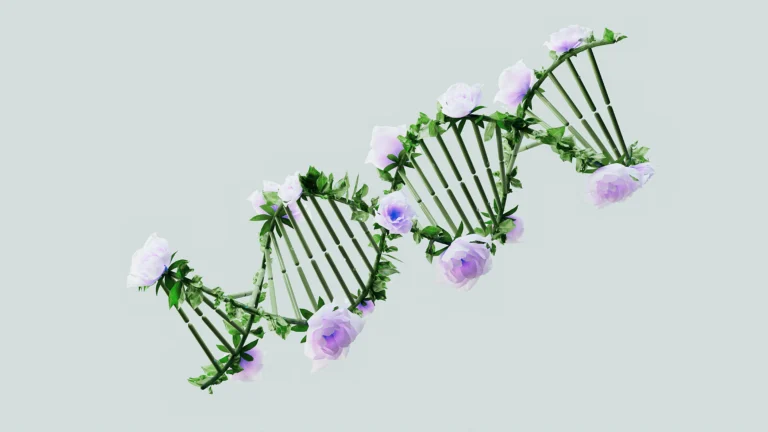
DIY Easy Flaxseed Gel (No Nylons) Recipe – The Best Formula!
This is my go-to DIY Easy Flaxseed Gel (No Nylon) Recipe! According to my experience, this turned out to be super easy and very beneficial. I feel-
Have you ever considered if genes that cause wavy hair happen to be recessive or dominant? Between straight and curly, wavy hair has soft bends and curves that give it a beautiful organic texture. Things can get a little harder when it comes to genetics.
Recessive traits usually disappear into the background while dominant traits are far more likely to appear in the next generation. The siblings with dominant traits are the bold, friendly ones who are mostly extroverts, and the siblings with recessive traits are the quiet, reserved ones who prefer to remain in the background.
It’s all about which genes hold more influence over others. It’s like a genetic lottery when it comes to the traits that parents pass on to their offspring. You never know what you’re going to receive!

A particular gene known as KRT75 is important for deciding how curly hair is. This gene works as a conductor, pointing other genes to create a perfect wave. The truth is that many genes play a role in deciding a person’s traits. Our individual hair textures are the result of complicated interactions among multiple genes.
So, is wavy hair the dominant sibling in the genetic family tree? Well, the evidence seems to suggest so! Studies have shown that wavy hair tends to run in families, with generations passing down those luscious waves like a precious heirloom.
Researchers studying population genetics often find that wavy hair is dominant in particular ethnic groups. It looks like people with wavy hair have their own fan club, where they show off their gorgeous locks wherever they go.
But what about the extremely rare cases where children of straight-haired parents have wavy hair? It’s like an unplanned genetic party where nothing goes according to plan. Some experts believe that wavy hair may still be hiding in the family tree, just waiting for the right time to show up.
We shouldn’t undervalue the variety of situations that could affect how our genes are passed on. The texture of our hair can change over time due to multiple factors such as humidity, sun exposure, and hair products.
But hold on just a moment – could wavy hair also be playing hide-and-seek as a recessive trait? Some scientists argue that while wavy hair may seem dominant in many cases, there are instances where it takes a back seat to straight hair. It’s like wavy hair is the undercover agent of the genetic world, quietly blending in until the right moment to reveal itself.
Then there are the rare genetic disorders that can throw an unexpected twist into the system and cause unknown changes in hair texture that go against the normal course of inheritance.
Whether wavy hair wins as the dominant darling of the genetic world or prefers to play it cool as a recessive trait, one thing’s for sure – our unique hair textures make us who we are, and we wouldn’t have it any other way. So embrace those waves, rock those curls, and remember that beauty comes in all shapes, sizes, and genetic variations. Until next time!
Absolutely! Remember, genetics can be full of surprises, and wavy hair genes may be lurking in the family tree just waiting to make an appearance.
Genetics can be a complex puzzle, and sometimes the combination of genes from both parents results in unexpected outcomes. It’s all part of the magical randomness of inheritance!
While we can make educated guesses based on family history and population genetics, there’s no surefire way to predict the exact outcome. It’s all part of the mystery and excitement of genetics!
Absolutely! Aging, changes in hormones, and environmental conditions, may affect our hair. Don’t be shocked if your waves at times decide to change things up for you.

This is my go-to DIY Easy Flaxseed Gel (No Nylon) Recipe! According to my experience, this turned out to be super easy and very beneficial. I feel-

These are my 5 favorite Wavy Haircuts for Women Over 50. I believe choosing the right haircut for your wavy hair is important, especially as we age.

To answer the question, does wavy hair need a gel cast? I think it is not necessary but it can turn out to be a game-changer for those with wavy-

I totally vouch for Aussie wavy hair products and these are a fantastic choice for anyone like me who wants to enhance and maintain their-

Living Proof Curl Detangling Rinse was, unfortunately, the worst wavy hair product I have ever used. It left my hair dry, and tangled, and I-

I know it can get truly difficult to maintain your hair during Fall. This is why I have come up with a few Fall Tips for 2a 2b and 2c Wavy Hair.